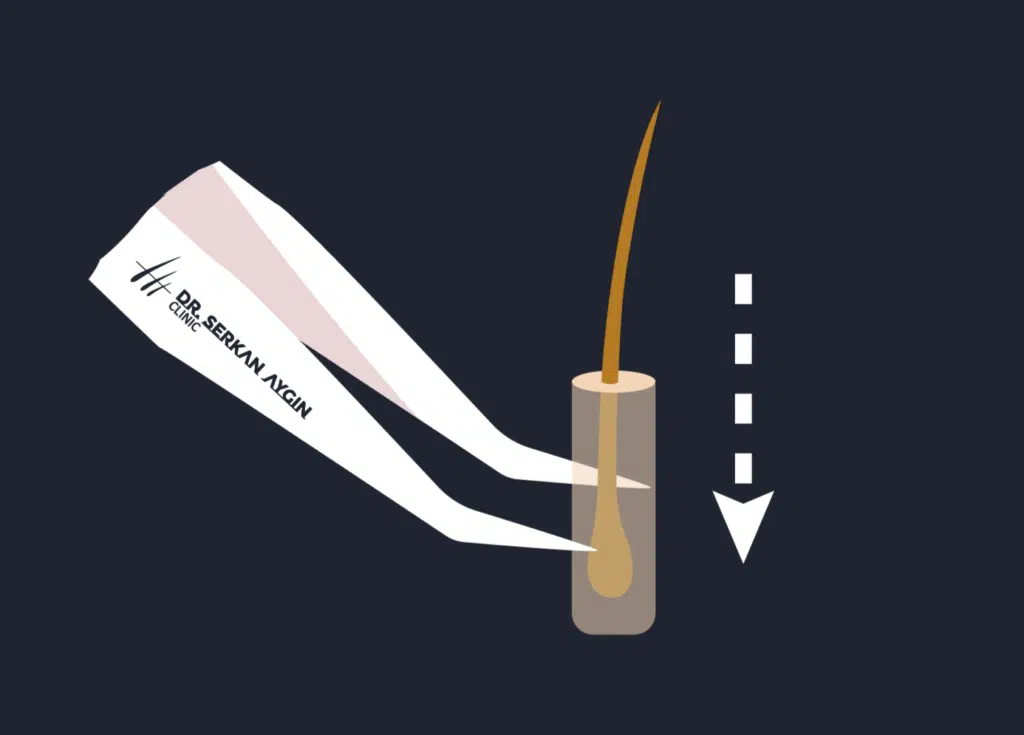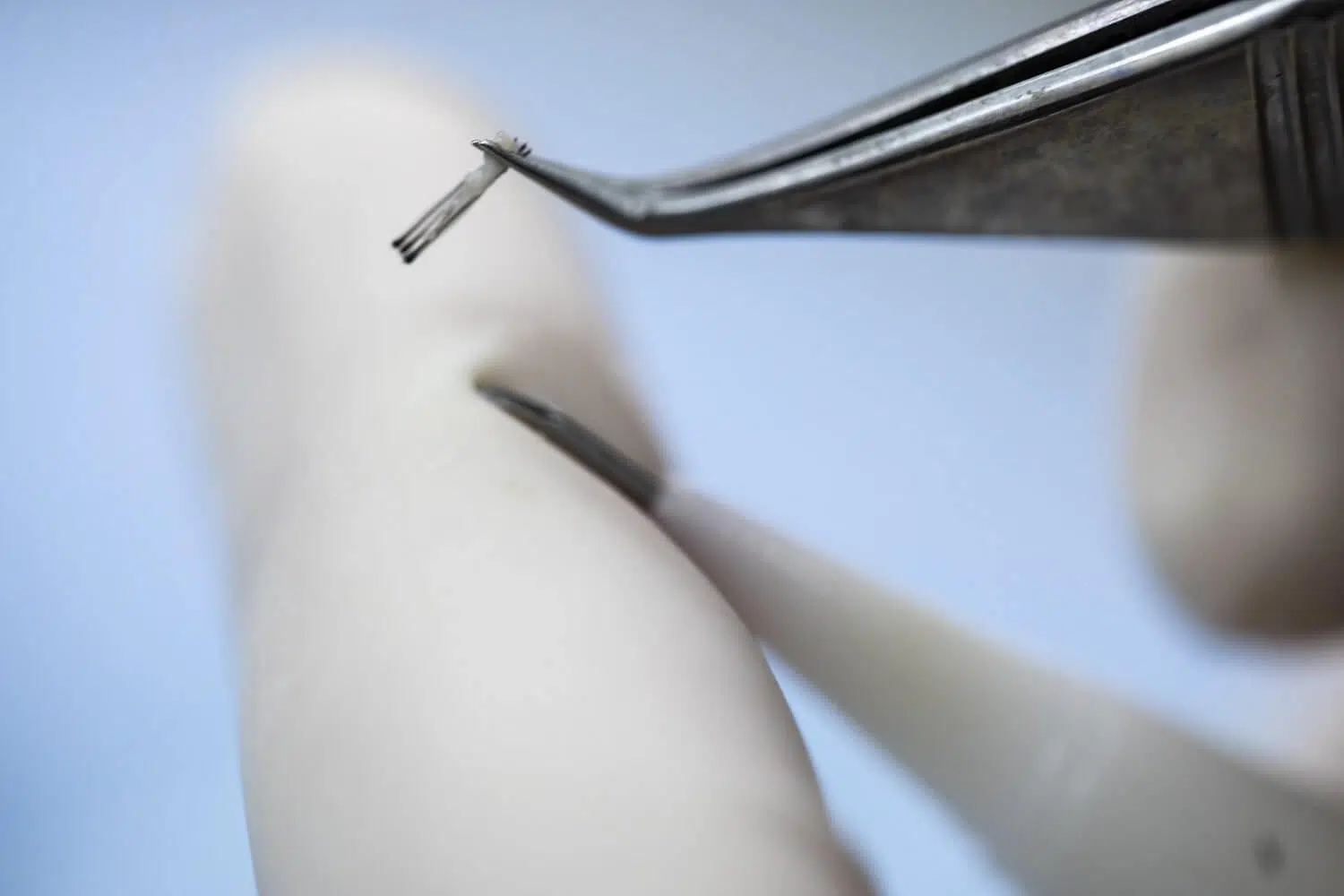What is a hair graft? A hair graft or a follicular unit is the harvested hair-bearing scalp tissue. It contains hair follicles in it and is used in hair transplants. The famous hair transplant surgeries get their names from hair grafts; “follicular unit extraction” FUE and “follicular unit transplantation” FUT.
People often use different terms while defining what is being transplanted during hair transplant surgery like follicles, follicular units, and plugs. The thing is, when you say hair graft, it almost comprehends all of them, but there are differences, let us explain the follicle first.
A hair follicle is basically the pocket of every single strand of hair, while a hair graft might contain more than a single hair follicle. An average adult with no serious hair loss issue is expected to have something around 100,000 hair follicles over the head.
We explained the hair graft in detail by comparing it with other terms, and here are the key points from our article:
- HAIR GRAFTS ARE HEALTHY TRANSPLANTABLE HAIR TISSUES
- THERE CAN BE MANY FOLLICLES IN A HAIR GRAFT
- HAIR GRAFTS ARE USED FOR THE IMPLANTATION OF DIFFERENT HAIR-LOSS AREAS
- THE HAIR GRAFTS ARE TAKEN FROM THE SCALP, BEARD CHEST, AND SOME OTHER BODY AREAS
- HAIR GRAFTS ARE HARVESTED WITH FUE AND FUT, AND IMPLANTED WITH REGULAR AND DHI METHODS
Now we will dive into details. Let’s start with the first question in mind: What is a hair graft?
Understanding A Hair Graft
In general, the term “graft” can be used for body parts that are transplantable or reshapable, and “hair graft” refers to transplantable hair tissues. A hair graft contains a single or many hairs that can grow where it is transplanted.
Grafting has a really long history but using hair grafts for hair transplantation gained its popularity around the mid-1900s. There were many who introduced different types of hair transplant techniques to cure baldness, but only after the realization of healthy hair follicles, or donor dominance theory, it became possible to achieve sustainable results.
In 1959, Norman Orentreich -who also founded the basis for donor dominance theory- was the first to comprehensively explain hair plugs (old version of hair grafts) in his publication at the New York Academy of Sciences. Although his first attempts were inspiring, the results he got were not satisfying at all. Later on, new techniques were developed like FUT and FUE thanks to his initial attempts.
What Is The Purpose Of Hair Grafts?
A hair graft is used in hair transplantation surgery that covers the balding hair, receding hairline, or lost temples. Not only for the scalp but also eyebrows, beard, and some body parts where people want to grow hair are transplantable with hair grafts.
What Is Considered A Single Hair Graft And Single Follicle?

A single hair graft refers to a follicle with a single hair shaft. Single-haired grafts are used while designing the hairline to balance the density and create a natural look.
A single follicle on the other hand is used for the beginning of every hair the pocket where hair grows. A hair follicle can also be called the hair factory, hair growth phases all happen here.
When you opt for a hair transplant surgery, you will be given a number of how many hair follicles will be implanted over your balding areas, which includes multiple or single hair shafts.
How Many Hairs Are There In A Single Hair Graft?
There can be 1-8 hairs in a single hair graft. Commonly you see the single-haired ones and 2-3-haired ones on one’s scalp. The usage of hair grafts including different hairs are used for different places on the scalp. For example, a hairline should be made by single hair including hair grafts.
The Anatomy of a Hair Graft
The hair graft has many different components and supporting tissues from hair shafts to hair bulbs. Here we will explore all of them.
HAIR SHAFT
This is the seen part of your hair, the strand. When you get a haircut hair shaft is the part of your hair where they cut.
HAIR FOLLICLE
The hair follicle is the round-shaped pocket where your hair grows. Usually, the term hair follicle is used to embrace all the other components within your hair under the skin. You can pull out of a hair shaft or bulb, but you cannot pull out the follicle.
SEBACEOUS GLAND
The sebaceous gland produces an oily or waxy substance sebum. This gland keeps your hair and skin lubricated. It is connected to the hair follicle the outer rim of your hair.
HAIR BULB
At the end of your hair, there is its water-drop-shaped alive part of your hair, the hair bulb. The blood circulation, living cells, and nerve endings are all here.
Types of Hair Grafts
There are not many differences between hair grafts, but they can be classified according to how many hairs are there in them, and how wide they are. Using the hair grafts in the correct places is important for the best natural-looking results.
- SINGLE-HAIRED ONES ARE USED FOR CREATING THE HAIRLINE
- 2-3-HAIRED ONES ARE USED RIGHT ABOVE THE HAIRLINE
- MORE THAN 3-HAIRED ONES ARE USED TO CREATE DENSITY ABOVE THE SCALP
Is There Any Difference Between Fue And Fut Hair Grafts?
FUE hair transplant uses micro punches to collect the hair grafts, while during a strip removal surgery of FUT, this is done with a stereo-microscopic dissection method. This can create some minimal differences in the width of hair grafts, but overall they are the same.
What Is A Hair Plug?
Hair plug is the old version of hair graft used in hair transplant surgeries back in the 1950s when hair grafting was first utilized. They used punches that were 4mm in diameter extracting a small skin strip, called a hair plug. Later on, hair plugs were outdated by mini, and micro grafting techniques, which are much smaller in diameter of 0.5mm.
The Role Of Grafts In Hair Transplantation
Without hair grafts, we can’t really talk about hair transplants. Back then there were some old methods like flap surgery, which literally means getting your scalp skin denser by covering the balding part. Then instead of doing these unsettling techniques, they discovered that by using people’s own hair tissues or hair grafts, transplant is possible.
It started with FUT, and then new methods like FUE, DHI, Robotic FUE, or Saphire FUE were developed to transplant the hair grafts in the best way possible. Thanks to these newly developed transplantation methods and the correct usage of hair grafts you can get these:
- NATURAL HAIRLINE DESIGN
- HIGHER VOLUME OF HAIR ON THE SCALP
- A BALANCED NATURAL APPEARANCE
- YOUNGER LOOK
How Long Does It Take For Transplanted Grafts To Start Growing Hair?
You should see the hair growth within the first 6 months after your surgery. Since the newly transplanted hair grafts have been through an operation, seeing satisfying results can take up to a year.
Do Hair Graft Numbers Represent The Actual Transplanted Hair Numbers?
No, hair grafts do not refer to how many hairs were implanted during a hair transplant surgery. Hair grafts usually contain more than single hairs in them. So, when you get 2,000 grafts of hair transplant this means you will have approximately more than 2,500 new hairs planted on your scalp.
To have a detailed information on how many grafts you need for a hair transplant, click here.
How Does The Grafting Process Work?
The clinic team will first numb the scalp, then the grafts are extracted with micro motor device, and tweezers (FUE), or by removing a strip of skin (FUT). Then, grafts are held in a solution and categorized according to the number of hair shafts. Finally implanted on your scalp with regular or DHI methods.
When we divide the hair transplant process into 3 steps, it would be like this:
- EXTRACTION OF HAIR GRAFTS
- PREPARATION OF HAIR GRAFTS
- IMPLANTATION OF HAIR GRAFTS
Let’s look at them one by one.
Extraction Of Hair Grafts
The hair grafts are harvested either one by one with FUE or collectively with FUT surgery. The donor areas for hair grafts are; the scalp, beard hair, body hair of the chest, and in some really rare cases pubic hair. FUE can be used for all of them but FUT is only available for the scalp.
- DURING THE FUE SURGICAL PROCEDURE, DOCTORS USE A SMALL MICRO PUNCH TO EXTRACT THE INDIVIDUAL FOLLICLES. THE MICRO PUNCH GOES UNDER THE SKIN AROUND 0.5 – 1.0MM AND GRIPS THE FOLLICLE OUT.
- DURING A FUT HAIR TRANSPLANT, ON THE OTHER HAND, DOCTORS REMOVE A SINGLE STRIP OF SKIN LINE AND THEN COLLECT THE FOLLICLES FROM THAT DONOR STRIP PIECE.
At the end of the extraction process, the hair graft loses its connection to blood vessels and has a survival time of around 12 hours.
Preparation Of Hair Grafts
Hair grafts need to be put in a saline solution and categorized according to their hair follicle counts. This is done to put them in the correct place on your scalp later on. For a natural hairline, single hair grafts are used, while for the crown density, multiple hair grafts containing 2 to 4 hair shafts are used.
Implantation Of The Grafts
There are two ways of implanting the grafts on the scalp; the regular method used in FUE and FUT, and DHI. In the classic method, they first open the hosting channels for implantation, and then the follicles are inserted in. In DHI, this is done simultaneously, without the extra step of opening the channels.
REFERENCES
(1) How Many Hairs Are on the Human Head? – Healthline, Jill Seladi-Schulman PhD, Sep 30 2019
(2) Orentreich, N. (1959), AUTOGRAFTS IN ALOPECIAS AND OTHER SELECTED DERMATOLOGICAL CONDITIONS. Annals of the New York Academy of Sciences, 83: 463-479. https://doi.org/10.1111/j.1749-6632.1960.tb40920.x
(3) Choudhry, N., Sood, A., & Steinweg, S. (2017). Norman Orentreich, The Father of Hair Transplantation. JAMA Dermatology, 153(8), 837. doi:10.1001/jamadermatol.2017.2097
(4) InformedHealth.org [Internet]. Cologne, Germany: Institute for Quality and Efficiency in Health Care (IQWiG); 2006-. What is the structure of hair and how does it grow? 2019 Aug 29.
(5) Saxena K, Savant SS. Body to Scalp: Evolving Trends in Body Hair Transplantation. Indian Dermatol Online J. 2017;8(3):167-175. doi:10.4103/idoj.IDOJ_283_16
(6) Dua A, Dua K. Follicular unit extraction hair transplant. J Cutan Aesthet Surg. 2010;3(2):76-81. doi:10.4103/0974-2077.69015

